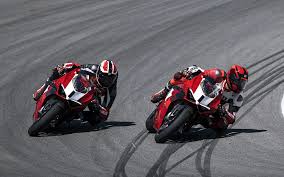Why the West Rules — For Now: The Patterns of History, and What They Reveal About the Future
by Ian Morris
A friend recommended I read "Why the West Rules--For Now" and I was delighted with this long history of the entire world. This is my kind of book, so I was predisposed to like it. Other books in this genre I love:
- Sapiens, Yuval Harari
- Guns, Germs and Steel, Jared Diamond
- Civilization: The West and the Rest, Niall Ferguson
- These Truths, Jill Lepore
- Prisoners of Geography, Tim Marshall
A one-volume history of all or part of the history of the world is ambition incarnate. When a historian can assert: Here is the history of the world (or a large slice of it) and make a good case, it is both interesting and opens a hundred interesting questions.
Ian Morris writes about the history of the East and the West in parallel. At the time the book was published they looked to be converging. A decade and a half later the West retained economic leadership, but the world is much more fragmented and dangerous than in 2010.
I am going to read more of Morris starting with "Foragers, Farmers and Fossil Fuels" published in 2015. I have read at least one other book by all the other authors in my list above, but the one in the list is my favorite, so far.
---------
"The Final Conflict" a review by Orville Schell
Dec. 10, 2010
This is a big “big book.” To accomplish his ambitious goal of both understanding the evolution of mankind’s past development and prognosticating the future of the continuing East-West horse race, Ian Morris starts around 15 millenniums ago. That’s a lot of history.
With such a grand design, “Why the West Rules — For Now” suggests the pretension of those Imperial Chinese encyclopedists who produced works like the Qing dynasty’s “Complete Collection of Illustrations and Writings From the Earliest to Current Times,” which sought to document “everything under heaven” in its 800,000 pages. It is hardly surprising that China, which has recently stolen up behind the “developed world” to threaten its supremacy (and all its common wisdom about development models), sits at the center of Morris’s book.
A British-born archaeologist, classicist and historian now at Stanford University, Morris is the historians’ equivalent of those physicists who search for a still elusive unified field theory. In his new book, he sets out to discover broad patterns, “the overall ‘shape’ of history,” by sifting through the world’s long development process. Following the oscillating forces from prehistory to the present, he shows how both the East and West managed to catalyze themselves at different times and in different ways to progressively new heights of development. But his ultimate challenge is to make sense of all these cycles of rise and fall, the better to judge whether either side was in possession of any innate superiority. His answer to that question is an emphatic no. East and West, he tells us, are just “geographical labels, not value judgments.”
If neither East nor West has had any innate developmental advantage, what then allowed the West to propel itself forward so successfully in the 18th century (answer: the discovery of fossil fuels), and what does that dominance portend for the future? “One of the reasons people care about why the West rules,” Morris explains, “is that they want to know whether, how long and in what ways this will continue — that is, what will happen next. . . . How long the West will stay on top is a burning question.”
But before you get to the answer, you must be ready to steel yourself for Morris’s early chapters, which nonspecialists will no doubt find arcane. His discussions of primitive man’s common African gene pool; of how the “Hilly Flanks” in the Middle East developed after the Ice Age; and of China’s ancient Zhou dynasty can seem awfully remote. And as he visits ancient places like Urartu, Erlitou, Tenochtitlán, Uluburun and Yue; introduces us to individuals like Hoshea, Tiglath-Pileser III, Khusrau II, Merneptah and Zhu Xi; or sets us down among the Ahhiyawans, Xiongnu, Kizzuwatnans, Hurrians and Jurchens, your head may begin to spin.
However, just as you begin to wobble beneath the breadth of such impressive research, Morris will pull back and give a brief coda of down-to-earth clarification, rescuing those readers with the will to soldier on through a few more millenniums. Or he will drop in a welcome wry aside to goad you down the trail of history. Commenting on the Ming dynasty explorer Zheng He, he notes that Zheng “was enlisted in the emperor’s service and castrated,” but nonetheless “seems to have taken all this in his enormous stride.” Or, on the discovery of the Americas, he observes, “Europe got a new continent and Native Americans got smallpox.”
Fortunately, Morris is a lucid thinker and a fine writer. He uses a minimum of academic jargon and is possessed of a welcome sense of humor that helps him guide us through this grand game of history as if he were an erudite sportscaster. He shows us how different empires were boosted by periods of “axial thought” to surge up the development ladder, only to crumble upon hitting a “hard ceiling,” usually inflicted by what he calls the Five Horsemen of the Apocalypse: climate change, migration, famine, epidemic and state failure.
But failure of one civilization only allowed another to arise somewhere else. The Roman Empire, Song dynasty China, Renaissance Europe and the Britain of the Industrial Revolution came along, got lift under their wings from new technology, social innovation or a creative organizing principle and pushed the whole process of development forward another notch.
According to Morris’s scorecard, since this age-old process began, the world index of social development has risen to 900 points. And, he predicts, in the next 100 years this index will rise an additional 4,000 points. He calls such progress “staggering.”
But with the West’s power and confidence now declining, and China’s authoritarian form of capitalism ripsawing its way toward an ever more dominant position in the world, a reader may be forgiven for becoming somewhat impatient. Is Morris ever going to answer the “burning question”? Who will win the next phase of our East-West horse race, the United States or China?
Finally, Morris surprises us. He duly acknowledges that “patterns established in the past suggest that the shift of wealth and power from West to East is inexorable” and that we may even be moving from “bankrupt America to thriving China.” But what really concerns him, it turns out, is not whether the West may be bested by the East, but whether mankind’s Promethean collective developmental abilities may not end up being our common undoing.
The competition that East and West have been pursuing for so long, Morris warns, is about to be disrupted by some powerful forces. Nuclear proliferation, population growth, global epidemics and climate change are in the process of radically altering old historical patterns. “We are approaching the greatest discontinuity in history,” he says.
Sounding suddenly more like an admonishing preacher than the amiable sportscaster to whom we have grown accustomed, Morris counsels that we now need to concentrate not on the old competition between East and West, but on a choice. We must decide between what Morris, borrowing from the writer Ray Kurzweil, terms “the Singularity,” salvation through the expansion of our collective technological abilities, and “Nightfall,” an apocalypse from the old Five Horsemen aided by their new accomplices. He warns that this choice offers “no silver medal.” One alternative “will win and one will lose.” We are, he insists, “approaching a new hard ceiling” and are facing a completely new kind of collective historical turning point.
For the Singularity to win out, “everything has to go right,” Morris says. “For Nightfall to win only one thing needs to go wrong. The odds look bad.”
Because distinctions of geography are becoming increasingly irrelevant, Morris views the old saw that “East is East and West is West” as a catastrophic way of looking at our present situation. Like it or not, East and West are now in a common mess, and “the next 40 years will be the most important in history.”
Although he implies it everywhere, Morris does not explicitly call for the United States and China to find new ways to collaborate. There may be no other solution. But will the leaders of these two unpredictable countries be able to rise to the unprecedented challenge they face? Not even Morris’s polymathic research abilities and pathbreaking analytic skills can help us answer that . . . for now.
------
Illustrated. 750 pp. Farrar, Straus & Giroux. $35
Orville Schell, the Arthur Ross director of the Center on U.S.-China Relations at the Asia Society, is writing a historical interpretation of China’s economic boom.
A version of this article appears in print on Dec. 12, 2010, Page 19 of the Sunday Book Review with the headline: The Final Conflict.


















































